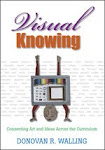
Technological wizardry has blurred the distinction between “live,” meaning right in front of you that very moment, and “live,” meaning at that moment but somewhere else. The range of examples is ever expanding.
The other day two friends spent FaceTime together, conversing “live” for several minutes. One was in Indiana, the other in Indonesia. FaceTime is the Apple app that allows users to make video calls. Skype is a similar service for audio or video calls through computer linkups.
Go from personal to performance and one can find any number of “live” events at the local movie theater, where audience members can watch, for instance, a Metropolitan Opera performance—almost but not quite—as though they were sitting in the hall at Lincoln Center—with ticket prices higher than normal for a movie but less than it would cost to be there in New York City.
When school budgets are too constrained to permit field trips, I’ve often advocated “virtual field trips,” taking students to places through the computer that they might never be able to visit in person. For example, students studying art or language might virtually “tour” the Louvre Museum in Paris. The museum offers a range of “thematic trails,” tours that can be taken online or in person. And the website provides its content in English, French, Chinese, and Japanese.
The difference between a virtual field trip and a virtual “live” event is synchronicity. That is, two live events are linked in real time. The opera performance is live in New York City. The audiences, plural, are live both there and in movie theaters where the live performance is being synchronously transmitted.
As this technology becomes ever more commonplace, its permutations are endless. A recent example brought to my attention was a retail music store opening in Fort Wayne, Indiana, at which a Yamaha piano was played remotely by pianist Mike Garson, who played an electronically linked instrument in the Yamaha corporate offices in Los Angeles. (See video.) In this instance, store visitors could witness a “live” performance in the same room as the instrument, while the performer was somewhere else.
Blurring the definition of “live” is a facet of technology that has been woven increasingly into the fabric of our lives, at least since Alexander Graham Bell made the first telephone call. At this point, one can only wonder, What next? And, more to the point, when will “live” cease to have any real meaning?




